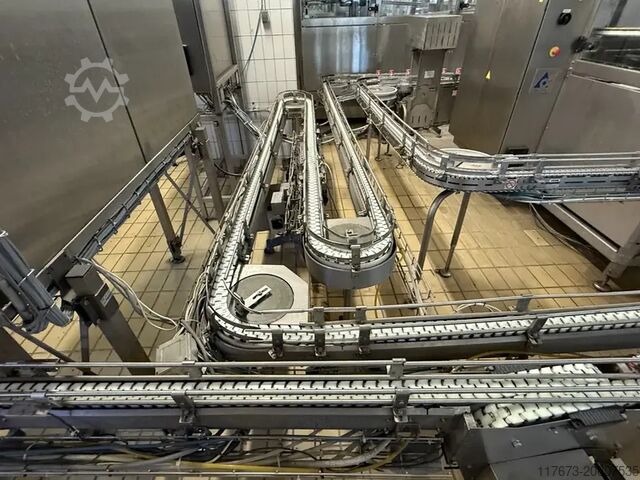Used Complete for sale (10,886)
 Mezőszemere
Mezőszemere Stand up pouch complete bagging line
ICAStandpack SP60
 Humulești
Humulești Complete line for steel wire fibers production
SpajicM-1 ZSN 35
 Suwałki
Suwałki Complete painting plant
VenjakobVEN COMFORTLINE

+44 20 806 810 84
 Mikkeli
Mikkeli Complete sawmill (stationary)
Heinola Sawmill
 Pegnitz
Pegnitz Plasticising units complete
ArburgArburg Plastifiziereinheit IU250, Ø 25 mm / 141.228 / Thermoplast Zylinder
Discover more used machines
 Privalj
Privalj Complete pellet production plant
 Gorzów Wielkopolski
Gorzów Wielkopolski Complete wood sawing line-pallets
BRODPOL JABŁOŃSKI3000 / 480 mm
 Roreto
Roreto Complete (4-sides) Edge banding LINE
IMA + MEINERT2 Combima II + P 415
 Nepomuk
Nepomuk Complete extraction system for a round timber cutting line.
Odsávání k výrobní lince na pořez kulatiXC 234
 Wimsheim
Wimsheim Complete production line
URBANTBA TKB
 Thisted
Thisted Complete Dairy Cheese Plant
DamrowCheese Press
 San Giovanni Al Natisone
San Giovanni Al Natisone Wigo Double squaring machine with 3 groups per side, complete with inverters.
Wigo
 Laakirchen
Laakirchen Complete sawmill (stationary)
PilousBlockbandsäge CTR710M
 Silvi
Silvi Complete PVC/Aluminium window factory
PROFTEQ - FOM - MECAL
 Neubrandenburg
Neubrandenburg Factory closure – Complete equipment for tire retreading
MarongoniRingtreader 900
 Fumane (Verona)
Fumane (Verona) Complete Bottling Line
 Kotka
Kotka Complete sawmill (stationary)
LINCK
 San Giovanni Al Natisone
San Giovanni Al Natisone 5-Bag Suction Filter, Complete
 Lauda-Königshofen
Lauda-Königshofen Complete production line
UrbanAKS 6250 und SV 530 B
 Județul Iași
Județul Iași Complete sawmill (stationary)
PrimultiniSägewerk
 Bischofszell
Bischofszell COMPLETE COATING UNIT
JEWAFÜR SM52-2-P
 Fumane (Verona)
Fumane (Verona) Complete Bottling Line
 Strenči
Strenči Complete sawmill (stationary)
Soderhamn/AriVislanda/Valon KoneSawmill
 Strenči
Strenči Complete sawmill (stationary)
Soderhamn Eriksson/ARI Vislanda240-12
 Strenči
Strenči Complete sawmill (stationary)
HewSawR200
Used Complete (10,886)
Search Machineseeker now with more than 200,000 used machines:Browse through the most popular machine descriptions:
This may be of interest to you

+44 20 806 810 84






































































































































































































































































































































































